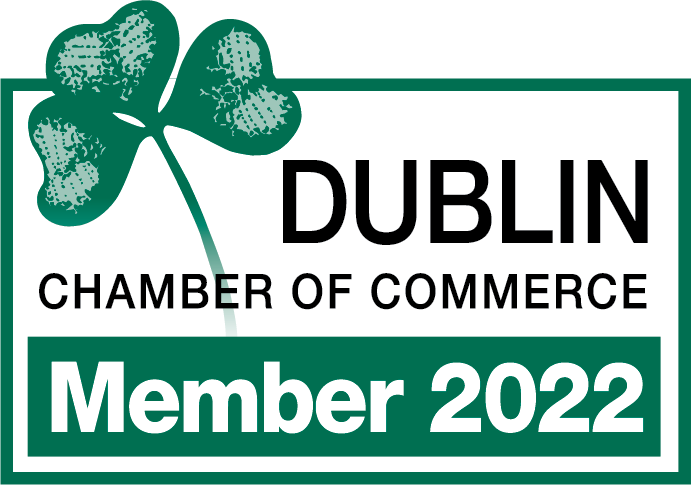You've got an amazing new idea, but you're worried that it'll fail from inadequate planning and proof of concept. So, what now?
Prototype manufacturing plays a crucial role in bridging the gap between concept and reality.
Let's take a closer look into the world of prototype manufacturing, exploring its importance, benefits, and the steps involved in transforming your innovative concepts into successful products.
The Process of Prototype Manufacturing
Prototype creation begins with the initial concept and design phase. This stage involves turning an idea into a detailed plan.
Designers and engineers work together to create sketches and blueprints. These drawings help visualize the product and identify any potential issues. This step is crucial because it lays the foundation for the entire process.
Once the design is complete, the next step is selecting the materials. The choice of materials depends on the type of prototype being created. For a functional prototype, materials that mimic the final product are used.
For a visual prototype, the focus is on appearance. Choosing the right materials ensures that the prototype will be as accurate as possible.
Creating the prototype is the next step. This involves building a physical model based on the design plans. There are several methods for doing this, including 3D printing, CNC machining, and handcrafting.
Each method has its advantages and is chosen based on the requirements of the prototype. During this stage, precision is key. Every detail must be carefully crafted to match the design specifications.
Next Steps
After the prototype is created, it undergoes testing. This phase is essential to identify any flaws or areas for improvement.
Functional prototypes are tested for performance, durability, and usability. Visual prototypes are assessed for their look and feel.
Testing allows designers to gather feedback and make necessary adjustments. This iterative process helps refine the prototype until it meets the desired standards.
Throughout the process, communication and collaboration are vital. Designers, engineers, and manufacturers must work closely together.
This ensures that everyone is on the same page and that the prototype meets all requirements. Regular updates and reviews help keep the project on track and allow for any changes to be made quickly.
Benefits of Prototype Manufacturing for Entrepreneurs
Prototype manufacturing offers many benefits for entrepreneurs. One major advantage is cost efficiency. Creating a prototype helps identify design flaws early, saving money in the long run.
Fixing issues during the prototype stage is much cheaper than addressing them after mass production has started. This helps in managing the budget effectively and reduces unexpected costs.
Another significant benefit is time savings. Prototypes allow for quicker testing and iteration. By creating a physical model, you can test your ideas faster and make necessary changes on the spot.
This speeds up the development process and helps bring your product to market more quickly. Time is often a critical factor in the competitive world of business, and being able to move quickly can give you an edge.
Prototype manufacturing also reduces risks. By testing your product thoroughly during the prototype phase, you can catch potential problems before they become major issues.
This reduces the risk of product failure and increases the chances of success. It also builds confidence among investors and stakeholders, as they can see a tangible model of your idea and understand its potential.
Innovation is another key benefit. Prototyping encourages experimentation and creativity. By physically building your ideas, you can explore new design possibilities and push the boundaries of what's possible. This fosters innovation and can lead to unique, groundbreaking products that stand out in the market.
Moreover, prototype manufacturing enhances communication. Having a physical model makes it easier to explain your vision to others.
Choosing the Right Prototype Manufacturing Partner
Choosing the right prototype manufacturing partner is a vital step in bringing your product to life. The first thing to consider is their expertise and capabilities.
Look for a partner with experience in your industry and a strong track record of successful projects. Their knowledge can help guide your project and avoid common pitfalls.
Next, evaluate their technological resources. The right partner should have access to advanced tools and machinery.
This includes 3D printers, CNC machines, and other equipment needed for creating accurate and high-quality prototypes. Modern technology can significantly enhance the precision and efficiency of the manufacturing process.
Other Things to Look For
Communication and collaboration are key factors as well. You need a partner who listens to your ideas and provides clear feedback.
Regular updates and open communication help ensure that the project stays on track and meets your expectations. A good prototype manufacturer will work closely with you throughout the entire process, from design to final testing.
Assessing their ability to handle complex projects is also important. Some prototypes require intricate designs and specialized materials.
Make sure your partner has the skills and resources to meet these demands. They should be able to offer solutions for any challenges that arise and adapt to changes in the project scope.
Another aspect to consider is their quality control measures. A reliable partner will have strict protocols in place to ensure that every prototype meets the highest standards.
Ask about their testing procedures and how they handle revisions. Quality control is essential for producing a prototype that accurately represents your final product.
Common Challenges in Prototype Manufacturing
Prototype manufacturing is a vital step in product development, but it comes with its own set of challenges. One of the most common issues is design and engineering problems.
When creating a prototype, the initial design might not translate perfectly into a physical model. Engineers often encounter unexpected complications that require adjustments and redesigns. This can delay the process and increase costs.
Material selection is another challenge. Choosing the right materials for a prototype is crucial to ensure it functions as intended. However, finding materials that closely mimic the final product can be difficult.
Sometimes, the ideal materials are too expensive or not readily available. This forces manufacturers to find alternatives that may not perform as well, potentially affecting the prototype's accuracy.
Budgets and Timelines
Budget constraints also pose a significant challenge. Developing a prototype can be expensive, especially for small businesses or startups. The costs of design, materials, labor, and testing can add up quickly.
Entrepreneurs must carefully manage their budgets to avoid running out of funds before the prototype is complete. This financial strain can limit the scope of the project and affect the quality of the final product.
Managing timelines is another critical issue. Developing a prototype involves multiple steps, each of which can take longer than anticipated. Delays in any phase, from design to testing, can push back the entire project.
This is especially problematic when there are tight deadlines to meet. Keeping the project on schedule requires careful planning and coordination among all team members.
Lastly, testing and iteration present their own set of challenges. Prototypes need to be tested thoroughly to identify any flaws or areas for improvement. This often requires multiple iterations, each involving tweaks and adjustments.
The iterative nature of prototyping can be time-consuming and resource-intensive. Ensuring that each iteration brings the prototype closer to the final product is key to a successful outcome.
Startup Prototype Development and Real Work Applications
Prototype manufacturing plays a significant role in various industries, offering practical benefits and driving innovation.
In the automotive industry, prototypes are used to test new car designs and features before they reach the market. These prototypes help engineers understand how a new vehicle will perform, allowing them to make necessary adjustments to improve safety and efficiency.
In the electronics industry, prototype manufacturing is essential for developing new gadgets and devices. Companies create prototypes of smartphones, tablets, and other electronic products to test their functionality and design.
This process ensures that the final product meets consumer expectations and performs well in real-world conditions. Prototypes help in identifying potential issues, allowing companies to address them before mass production.
Healthcare also benefits from prototype manufacturing. Medical devices and equipment, such as prosthetics and diagnostic tools, undergo rigorous testing through prototyping.
This ensures that these devices are safe, effective, and user-friendly. Prototypes allow healthcare professionals to evaluate and refine these products, ultimately improving patient care and treatment outcomes.
Other Industries
The aerospace industry relies heavily on prototypes for developing new aircraft and components. Prototyping helps in testing aerodynamics, materials, and systems in a controlled environment.
This allows engineers to make data-driven decisions and enhance the performance and safety of aircraft. The iterative process of prototyping is vital for meeting the high standards required in this industry.
Another example is the consumer goods sector, where prototypes are used to develop products like home appliances, toys, and furniture. Prototyping allows designers to test different materials, shapes, and functions.
This helps in creating products that are not only aesthetically pleasing but also practical and durable. By refining prototypes, companies can ensure that their products meet market demands and stand out from competitors.
Prototyping Services
Prototype manufacturing transforms entrepreneurial ideas into reality by allowing for testing, refinement, and improvement.
Since 1989, Hidaka USA, Inc. has been supplying customers with high quality prototypes. Over the years, we have expanded our workforce, equipment lineup, technical expertise and infrastructure to support mass production demands.
Get in touch today to find out how we can help with your prototype needs!








